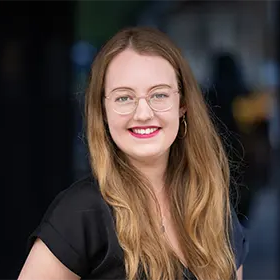Lots of agencies boast about their flexible working policies – in job adverts, on their ‘About us’ pages and on social media, to name a few places. But it’s not often that you hear about what that really means. Sure, it sounds like an attractive policy. But how flexible is ‘flexible’?
I entered the working world in a strange and transformational time – right in the middle of the COVID-19 pandemic’s lockdown restrictions. Companies were pivoting to remote working almost overnight, and ways of working changed abruptly.
Today, despite offices reopening, many have adapted to hybrid working policies. Others have reverted to ‘normal’. But what does that mean for those of us who don’t have an office to return to, and aren’t beholden to the opening hours of their company headquarters?
For me, as an honorary member of our agency’s Team Americas – my line manager is based in Canada – it has meant that my working hours are far from the 9–5 that many employees elsewhere follow (even those at supposedly flexible companies). In part, this is so I can provide editing and sub-editing support to our small North American team. And, in part, it’s because if there is a flexible hours policy, why not make the most of it?
On a normal week, I’ll start my Monday at 12:00PM and stick around till 8:30PM. As a night owl, this is perfect. I get to play to my strengths, work with my American colleagues and communicate with our clients overseas while everyone else on the UK side has long switched off for the evening. But, you ask: What about Fridays, and trying to have a social life? Beginning on Wednesdays, I start an hour earlier each day. So, by the time Friday arrives, I’m back on UK hours – clocking in at 9:00AM and closing my laptop at 5:30PM sharp.
With coworking spaces once again fully operational, though, I sometimes head to our base in central London – usually on Wednesdays – to work in person with my colleagues. This means I’m back on UK time ahead of schedule. During those weeks, I’ll start work later again on the following day. That lets me get my work done when my night-owl brain is at its most active. And our company benefits from having an extra pair of eyes and hands to help out after the UK day is over. Everybody wins.
This isn’t the only way I’ve benefitted from flexible hours. Back in June 2022, I was lucky enough to visit Thailand for just over two weeks. Because we have a team member who lives there, I took advantage of our flexibility and coworked with him for one of those two weeks, beavering away while the UK team slept and clocking off before they’d even had lunch. This meant that I had an in-person coworker for one full week – a rarity when you work for a remote company. It also meant that I didn’t have to take the whole two weeks as annual leave (or leave my team without a core member during that time). Again, everybody wins.
If your company says that it has a flexible working policy but you’re not sure what that means, I encourage you to find out. You might end up finding even better ways of working. And you might inspire your company to explore and embrace fresh new ideas about what ‘flexible’ working really means.








